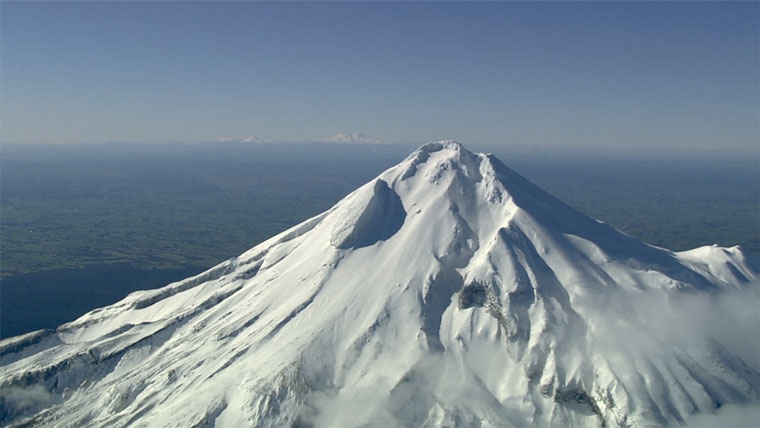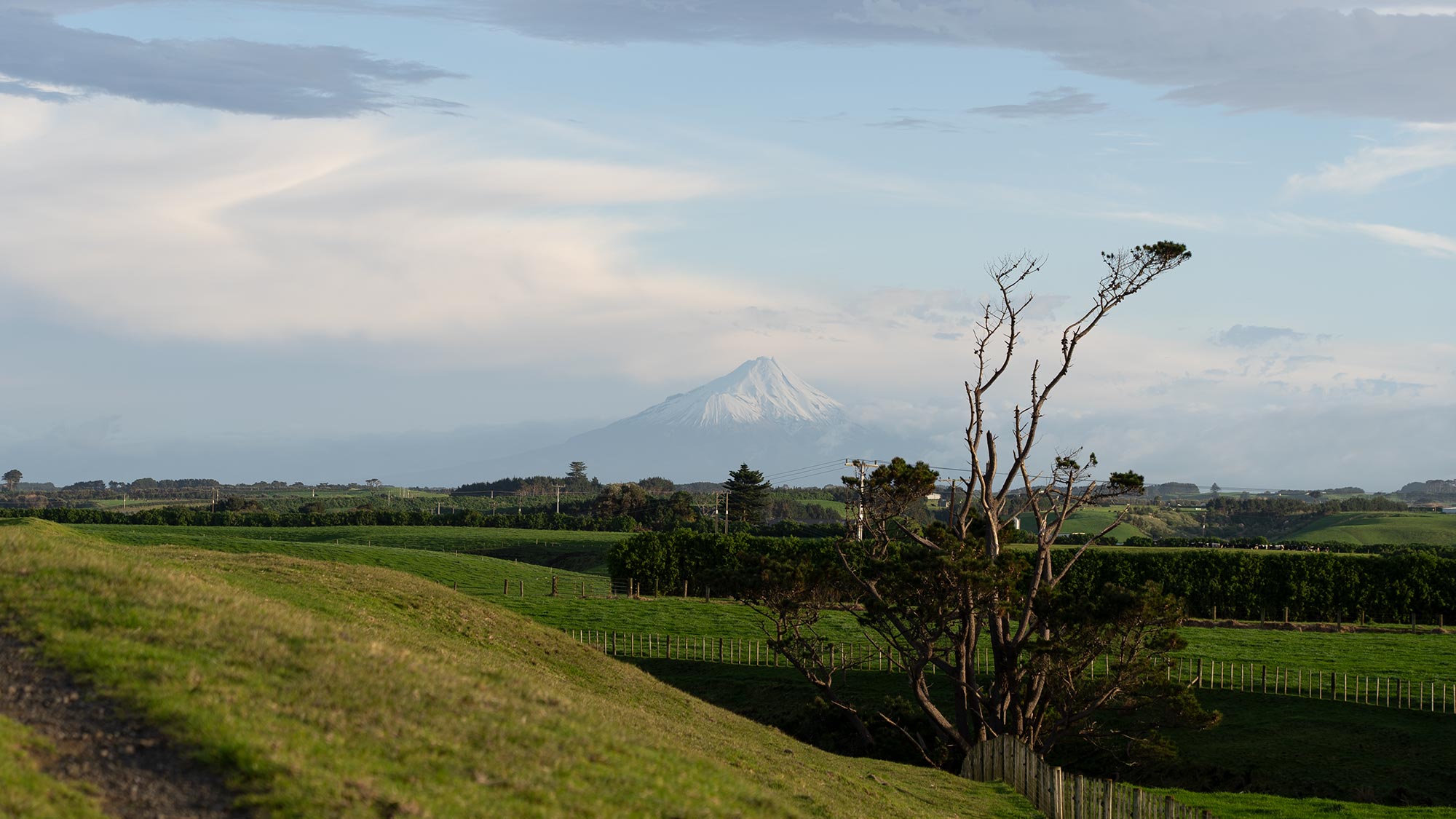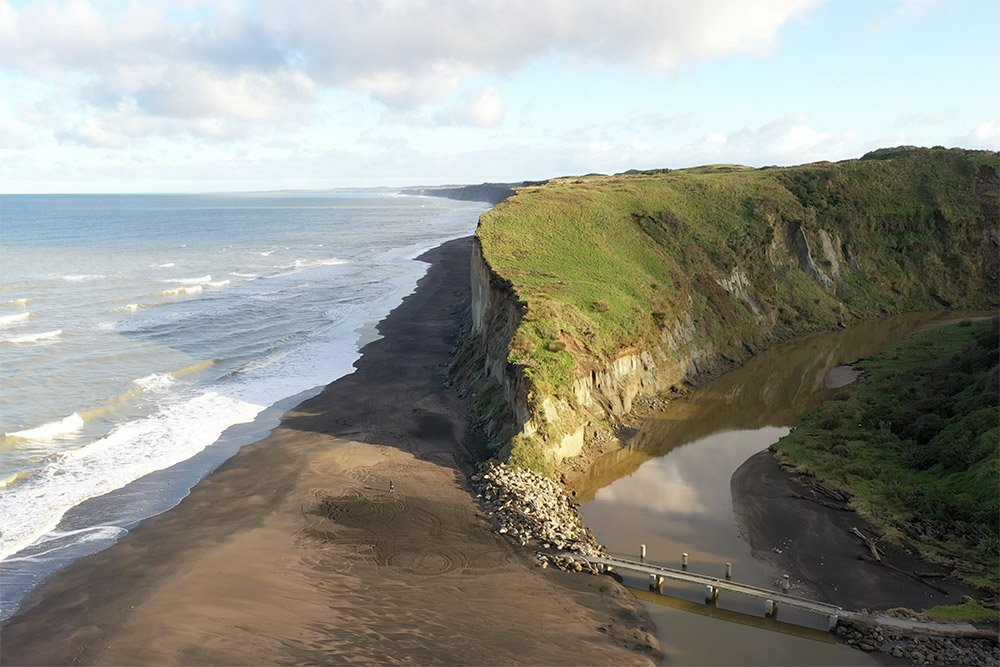Ngaa Rauru Kiitahi: Taranaki, the mountain. Taranaki, the people
Chapter 7
Taranaki maunga: redress
In 1865, Taranaki Maunga, including the surrounding ranges, was confiscated by the New Zealand Government under the New Zealand Settlements Act 1863.
Explore Chapter 7
Video transcript
Ngaa Maunga o Taranaki includes Taranaki Maunga, and the Pouaakai and Kaitake Ranges.
Through the Deed of Settlement it was made clear, Ngaa Rauru Kiitahi would not receive further financial or commercial redress relating to the confiscation of Ngaa Maunga o Taranaki.
There would, however, be an opportunity to negotiate with Crown cultural redress and an apology that would recognise the traditional, cultural, historical and spiritual significance of Ngaa Maunga, to all iwi hapuu of Taranaki.
After more than 150 years, Ngaa Iwi o Taranaki are finally able to settle their grievances relating to Ngaa Maunga.
Let’s take a quick look at the history.
In 1770, Captain James Cook renamed Taranaki Maunga, Mount Egmont, after John Perceval, the 2nd Earl of Egmont, the first Lord of Admiralty. The Earl had never even set foot in Aotearoa, New Zealand. He likely wasn’t even aware of the honour since he died the same year.
Nearly a hundred years later in 1865, Taranaki Maunga, including the surrounding ranges, was confiscated by the New Zealand Government under the New Zealand Settlements Act 1863. This law allowed for the Government to confiscate land from any iwi who ‘rebelled’ against the Crown, without compensation.
In 1881, the land around the basin of the mountain was made into a forest reserve. The Pouaakai and Kaitake Ranges were later added to the reserve. In 1900, the reserve was gazetted as Egmont National Park, the second national park in New Zealand. Fast forward to 1987, the names Taranaki and Egmont were both granted official status by the New Zealand Geographic Board.
The New Zealand Geographic Board is the country’s national place naming authority responsible for official place names in New Zealand, its offshore islands and continental shelf, and the Ross Dependency of Antarctica.
By 2017, all eight iwi hapuu of Taranaki were ‘in a position to negotiate’ the confiscation of Ngaa Maunga o Taranaki.
Key elements of the collective redress deed and legislation agrees;
- to declare Ngaa Maunga o Taranaki as a legal personality;
- the vesting of all available Crown-owned land in Ngaa Maunga into that legal personality;
- the establishment of a joint governance programme;
- an official name change for Egmont National Park to Te Papakura aa Taranaki, including more than 100 other geographical features within Nga Maunga;
- a set of Maunga values;
- and the repeal of the Mount Egmont Vesting Act 1978
These affairs will be managed by Te Toopuni Kookoorangi.
Te Toopuni Kookoorangi is a joint governance entity, comprising Ngaa Iwi o Taranaki and Crown appointments that will represent the legal personality of Taranaki Maunga and Te Papakura a Taranaki.
Taranaki and its surrounding mountains and ranges do not thrive in isolation of Te Kaahui Tupua. Te Anga Puutakerongo also acknowledges the longstanding links Ngaa Iwi o Taranaki have with other iwi and their interests in Tongariro and Whanganui National Parks.
Protecting the unique identities of all maunga is paramount.
By 2017, all eight iwi hapuu of Taranaki were ‘in a position to negotiate’ the confiscation of Ngaa Maunga o Taranaki.
Ngaa Maunga o Taranaki includes Taranaki Maunga, and the Pouaakai and Kaitake Ranges.
Through the Ngaa Rauru Kiitahi Deed of Settlement it was made clear, they would not receive further financial or commercial redress relating to the confiscation of Ngaa Maunga o Taranaki.
There would, however, be an opportunity to negotiate with Crown cultural redress and an apology that would recognise the traditional, cultural, historical and spiritual significance of Ngaa Maunga to all iwi hapuu of Taranaki.

Key elements of the collective redress deed and legislation agrees;
- to declare Ngaa Maunga o Taranaki as a legal personality
- the vesting of all available Crown-owned land in Ngaa Maunga into that legal personality
- the establishment of a joint governance programme
- an official name change for Egmont National Park to Te Papakura aa Taranaki, including more than 100 other geographical features within Ngaa Maunga
- a set of Maunga values
- and the repeal of the Mount Egmont Vesting Act 1978
These affairs will be managed by Te Toopuni Kookoorangi.
Te Toopuni Kookoorangi is a joint governance entity, comprising Ngaa Iwi o Taranaki and Crown appointments that will represent the legal personality of Taranaki Maunga and Te Papakura o Taranaki.


